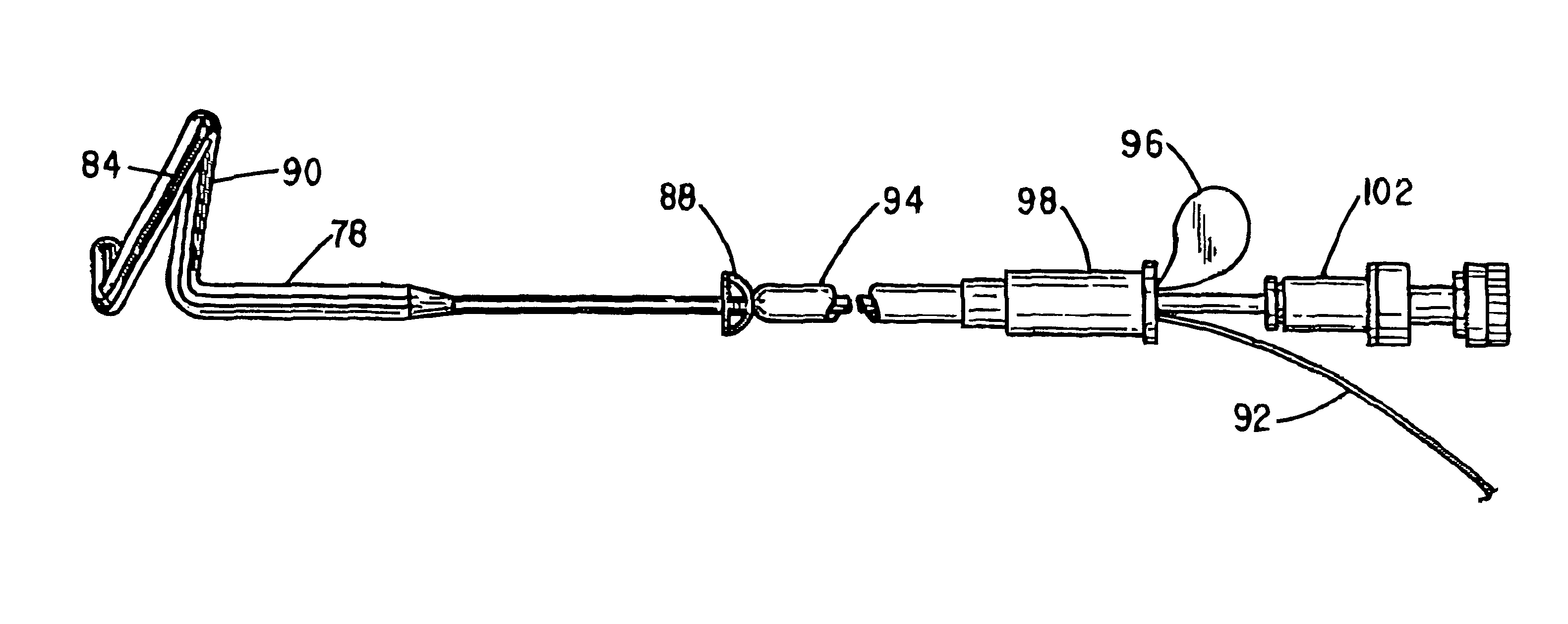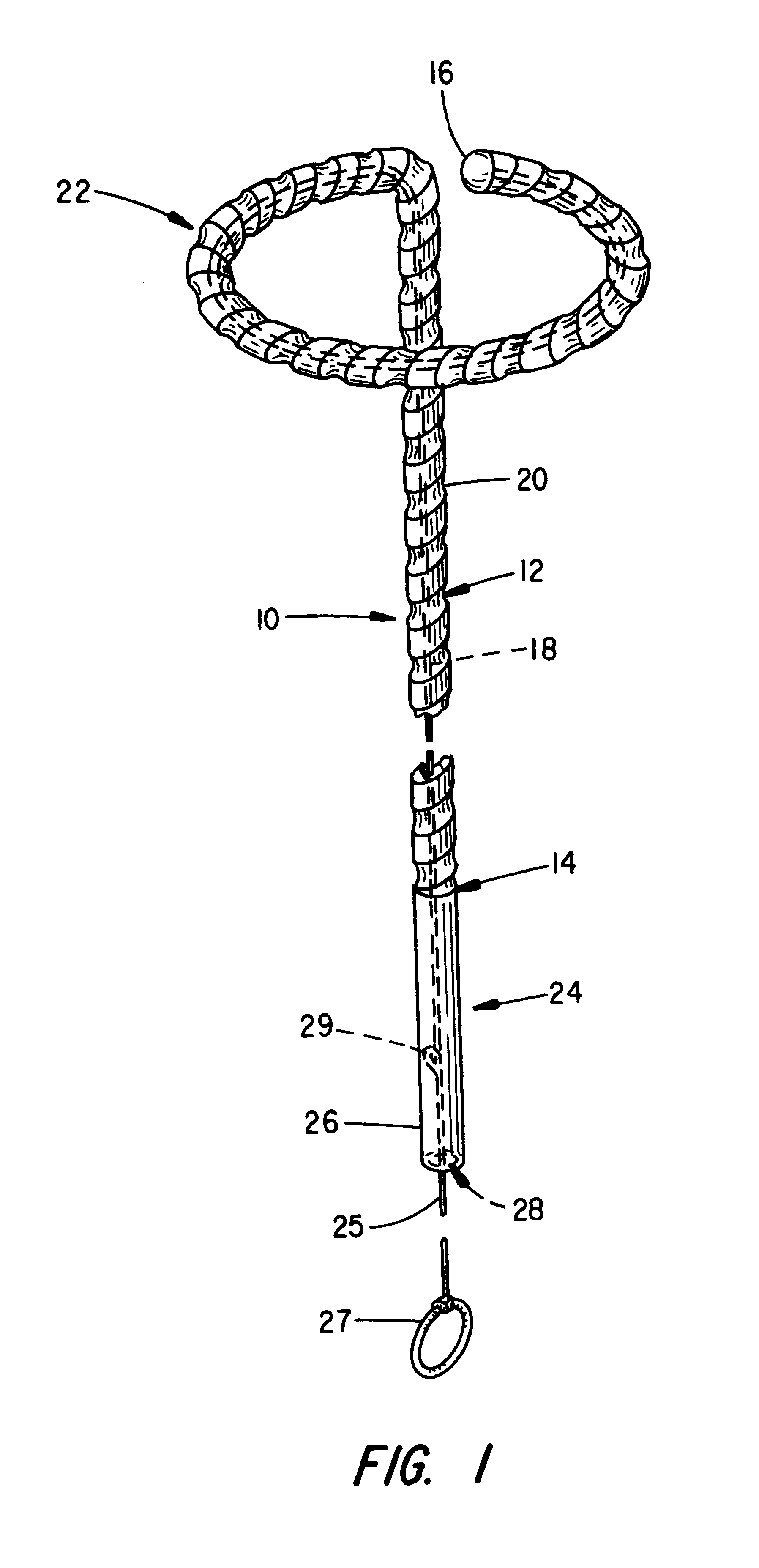Self-cleansing bladder drainage device
a bladder and self-cleaning technology, applied in the field of bladder fluid drainage devices, can solve the problems of tissue compression, irritation and erosion related adverse side effects, and patients are not able to void when they want,
- Summary
- Abstract
- Description
- Claims
- Application Information
AI Technical Summary
Problems solved by technology
Method used
Image
Examples
Embodiment Construction
Referring to FIG. 16, there is indicated generally by numeral 76 a urinary drain comprising an alternative embodiment to the present invention. It is seen to comprise an elongated, flexible tubular body member 78 having a proximal end 80 and a distal end 82 with a stylet receiving lumen (not shown) extending from the proximal end 80 toward but just short of the distal end 82. Thus, the distal end 82 covers the stylet lumen, precluding the flow of body fluids therethrough when the drainage device 76 is appropriately placed within the urinary tract of the patient.
The body member 78 of the drainage device 76 is shown as including at least one channel 84 formed in the surface thereof and it extends from the distal end 82 to a zone 86 where the outside diameter of the drain body member 78 tapers to a lesser diameter where the drain body is void of any surface groove. As with the embodiment of FIG. 1, the drain body member 78 may have an outside dimension of about 0.21 inches in the porti...
PUM
 Login to View More
Login to View More Abstract
Description
Claims
Application Information
 Login to View More
Login to View More - R&D
- Intellectual Property
- Life Sciences
- Materials
- Tech Scout
- Unparalleled Data Quality
- Higher Quality Content
- 60% Fewer Hallucinations
Browse by: Latest US Patents, China's latest patents, Technical Efficacy Thesaurus, Application Domain, Technology Topic, Popular Technical Reports.
© 2025 PatSnap. All rights reserved.Legal|Privacy policy|Modern Slavery Act Transparency Statement|Sitemap|About US| Contact US: help@patsnap.com



